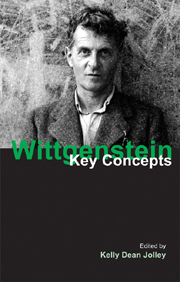Book contents
- Frontmatter
- Contents
- Contributors
- Abbreviations
- Introduction
- 1 Wittgenstein's philosophical remarks
- 2 Wittgenstein on meaning and meaning-blindness
- 3 Language-games and private language
- 4 Wittgenstein on family resemblance
- 5 Ordinary/everyday language
- 6 Wittgenstein on rule-following
- 7 Thinking and understanding
- 8 Psychologism and Philosophical Investigations
- 9 Moore's paradox revisited
- 10 Aspect perception
- 11 Knowing that the standard metre is one metre long
- 12 Therapy
- 13 Criteria
- 14 Grammatical investigations
- 15 Teaching and learning
- 16 Expression and avowal
- Chronology of Wittgenstein's life
- Bibliography
- Index
12 - Therapy
- Frontmatter
- Contents
- Contributors
- Abbreviations
- Introduction
- 1 Wittgenstein's philosophical remarks
- 2 Wittgenstein on meaning and meaning-blindness
- 3 Language-games and private language
- 4 Wittgenstein on family resemblance
- 5 Ordinary/everyday language
- 6 Wittgenstein on rule-following
- 7 Thinking and understanding
- 8 Psychologism and Philosophical Investigations
- 9 Moore's paradox revisited
- 10 Aspect perception
- 11 Knowing that the standard metre is one metre long
- 12 Therapy
- 13 Criteria
- 14 Grammatical investigations
- 15 Teaching and learning
- 16 Expression and avowal
- Chronology of Wittgenstein's life
- Bibliography
- Index
Summary
In a number of remarks, dating back to the early 1930s, Wittgenstein drew an explicit analogy between his methods of philosophical enquiry and psychotherapy. So, alongside the famous remark from Philosophical Investigations directly on this (see below), we have other remarks from the Big Typescript and from his dictations to Friedrich Waismann for Moritz Schlick. These are those places where Wittgenstein explicitly coins the term by way of elucidating his method. Here are some samples of his explicit references to therapy:
Our method resembles psychoanalysis in a certain sense. To use its way of putting things, we could say that a simile at work in the unconscious is made harmless by being articulated. And this comparison with analysis can be developed even further. (And this analogy is certainly no coincidence.)
(Diktat für Schlick 28, in Baker 2003: 69e–71e)One of the most important tasks is to express all false thought processes so characteristically that the reader says, “Yes, that's exactly the way I meant it”. To make a tracing of the physiognomy of every error.
Indeed we can only convict someone else of a mistake if he acknowledges that this really is the expression of his feeling. // … . if he (really) acknowledges this expression as the correct expression of his feeling.
For only if he acknowledges it as such, is it the correct expression. (Psychoanalysis.)
What the other person acknowledges is the analogy I am proposing to him as the source of his thought. […]
- Type
- Chapter
- Information
- WittgensteinKey Concepts, pp. 149 - 159Publisher: Acumen PublishingPrint publication year: 2010
- 6
- Cited by

